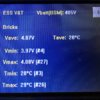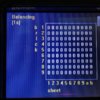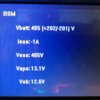Hey Gang,
My 2011 2.5 Sport Held steady for years at around 185 to 190 miles on a Standard charge.
Suddenly a month or two back, I noticed a sudden drop to around 165, and it has been creeping downward ever since.
Now it is sitting at an estimated 148 Ideal range off a Standard charge.
I expect the range to creep down over time, but this seemed pretty dramatic after being so steady for so long.
Car has 31000 miles on it.
I’ve always tried to be very careful with my charging. I’ve only ever charged for Range once. I use the auto start timer to minimize the time it will sit fully charged before I drive it. I use Storage mode when I know it is going to sit for more than a couple of days.
Is there anything I can do, or am I just losing panels and that’s it for ever getting the range back up short of a compete replacement or upgrade?
Any advice that a non-techie owner might try?
Thanks!
Ted
2.5 Sport #1422
My 2011 2.5 Sport Held steady for years at around 185 to 190 miles on a Standard charge.
Suddenly a month or two back, I noticed a sudden drop to around 165, and it has been creeping downward ever since.
Now it is sitting at an estimated 148 Ideal range off a Standard charge.
I expect the range to creep down over time, but this seemed pretty dramatic after being so steady for so long.
Car has 31000 miles on it.
I’ve always tried to be very careful with my charging. I’ve only ever charged for Range once. I use the auto start timer to minimize the time it will sit fully charged before I drive it. I use Storage mode when I know it is going to sit for more than a couple of days.
Is there anything I can do, or am I just losing panels and that’s it for ever getting the range back up short of a compete replacement or upgrade?
Any advice that a non-techie owner might try?
Thanks!
Ted
2.5 Sport #1422










